Biodiversity Week: almost half a million observations and more than 7,000 unique species
Demervallei second most biodiverse Natura 2000 area in Europe in European competition
Over the past week, more than 21,000 citizens responded to the call from the Agency for Nature and Forests, among others, to spot and map plants and animals en masse. This large-scale action took place as part of Biodiversity Week, an initiative of 14 Belgian nature organisations within the European LIFE Belgium 4 Biodiversity project. Between 17 and 25 May, more than 437,000 observations were recorded in gardens, parks and nature reserves. The number of unique species observed rose to more than 7,000 this year, an increase of 400 observed species compared to last year.
The “Vollenbak natuur bingen/Plonger dans la nature” campaign called on everyone to register as many wild plants and animals as possible via the free ObsIdentify app from co-organiser Natuurpunt.
The goal? To investigate the state of biodiversity in our country in a fun, accessible way and to brush up on our knowledge of it. Because anyone who registers a plant or animal via the app also immediately receives the name and occurrence of the species.
Jeroen Denaeghel, spokesperson for the Agency for Nature and Forests: "These observations are worth their weight in gold in terms of gaining a good understanding of our biodiversity and identifying trends over time. Waarnemingen.be records around 10 million observations of plants and animals in Belgium every year. During Biodiversity Week, the database gets a significant boost by encouraging as many people as possible to spot nature in their neighbourhood in a short period of time."
European top score
Biodiversity Week was once again a great success in our country. More than 21,000 citizens took part in the challenge and together recorded 437,640 observations. The provinces of Antwerp, East Flanders and Flemish Brabant have the most active observers in their ranks.
Jeroen Denaeghel of the Agency for Nature and Forests: "Although the number of observations is slightly lower than in 2024, the conditions were more challenging this year. For example, there was a code red fire hazard warning in Antwerp and Limburg for a whole week, and a fire did break out on the Mechelse Heide in the Hoge Kempen National Park. On top of that, there were several days of rain, which reduced the number of sightings. Nevertheless, we can speak of a very successful edition."
The biodiversity itself is also striking: with more than 7,000 different species, 400 more species were observed than last year. We score very well in Europe in this respect. Parallel to the Belgian campaign, the annual European “Bioblitz for Natura 2000 areas” took place, a competition in which species are counted in protected nature areas throughout Europe.
A total of 86 areas across Europe took part, with just under 80,000 online observations recorded. Our country dominated this European biodiversity competition with no fewer than seventeen Belgian Natura 2000 areas in the top 25, including the Demer Valley, the Sonian Forest and the “Montagne Saint-Pierre”. Of all the participating Natura 2000 areas, the Demer Valley scored the silver medal in terms of species richness with no fewer than 1,576 different species observed in one week, second only to the Veluwe in the Netherlands.
Jeroen Denaeghel of the Agency for Nature and Forests: "This week proves how valuable such an accessible campaign is in getting people involved in nature and science. The fact that we scored so highly in the European competition proves that every observation counts. A nice bonus is that many people took a moment to reflect on the biodiversity around them. One of the main objectives of this campaign was therefore to increase support for and knowledge about biodiversity. We are therefore looking forward to the coming years and hope that more and more species will be spotted in our country."
Rare observations
Among the observations were many species that are common or fairly common in our country, but rare and even very rare species were also recorded. Below you will find the most remarkable findings and the results per province.
Image
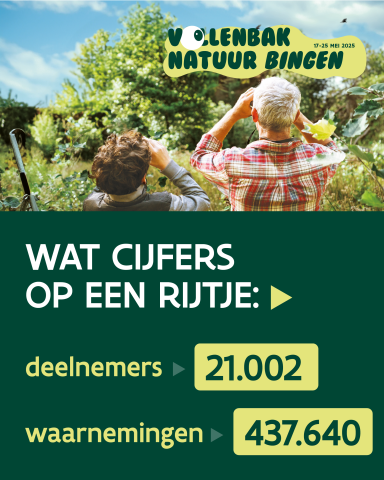
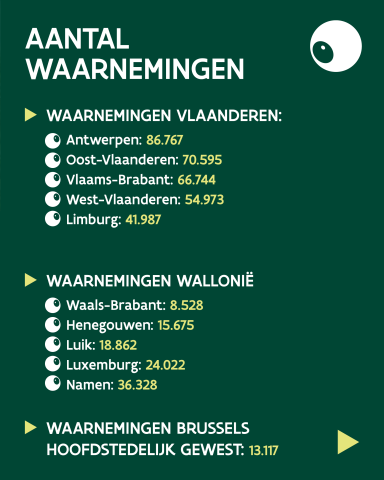
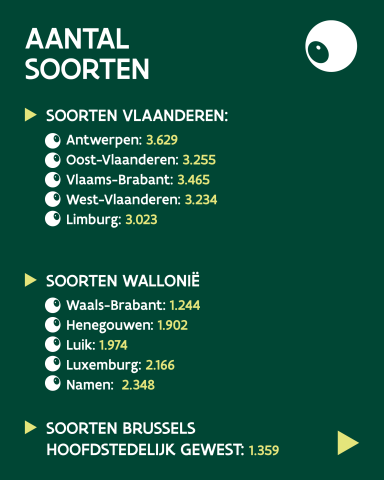
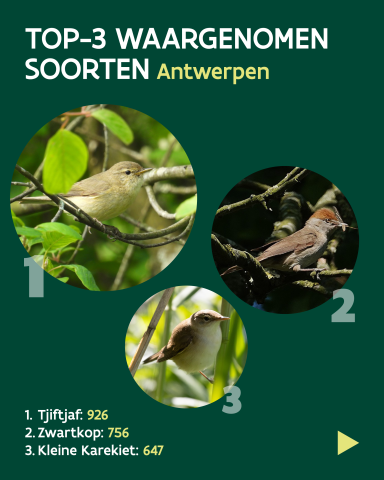

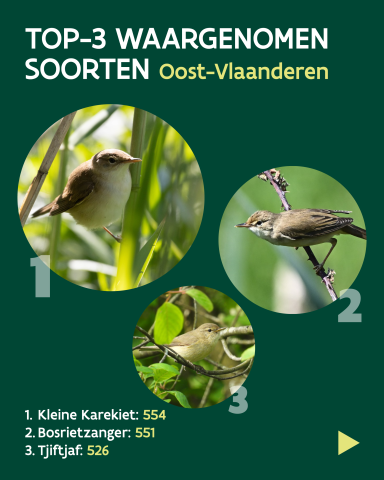
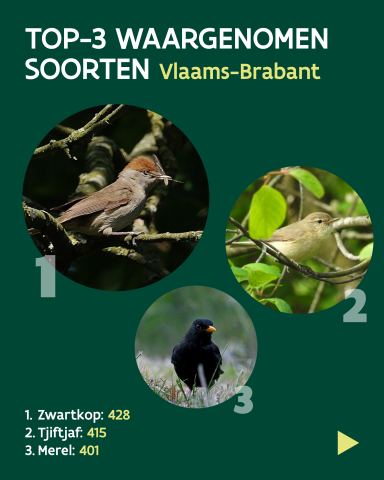
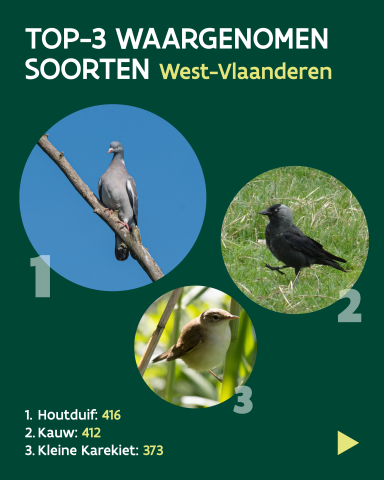
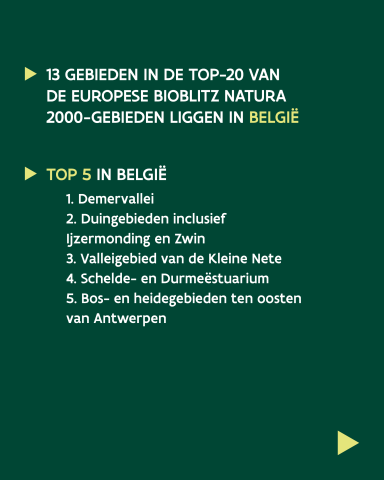
| Image
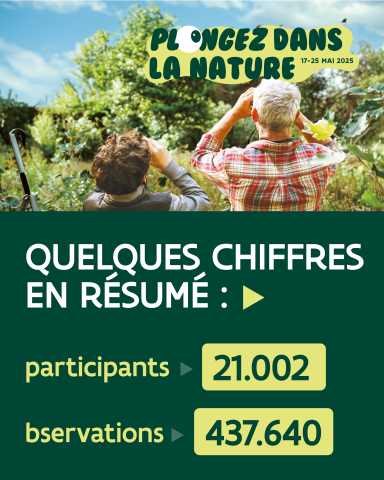
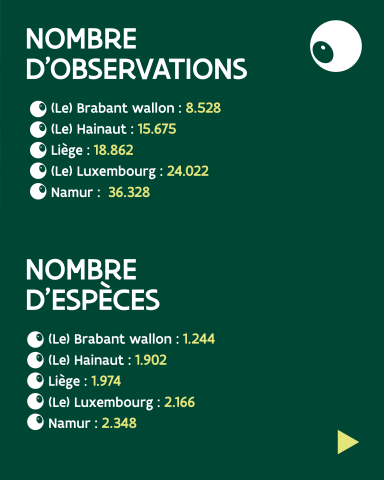
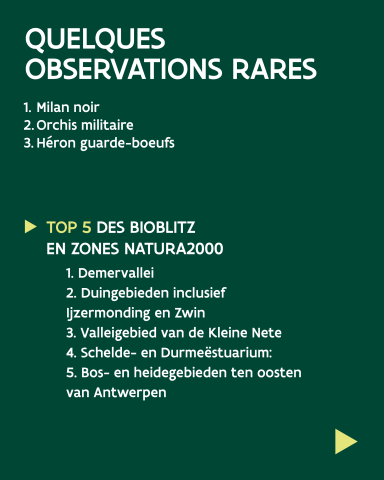
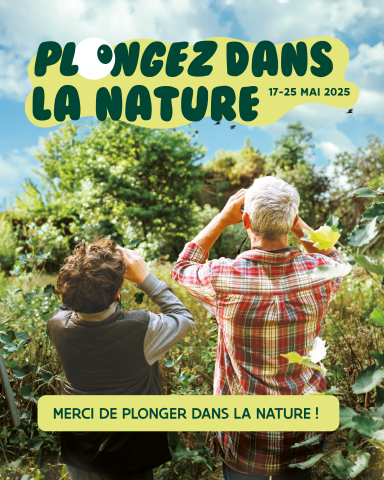
|

